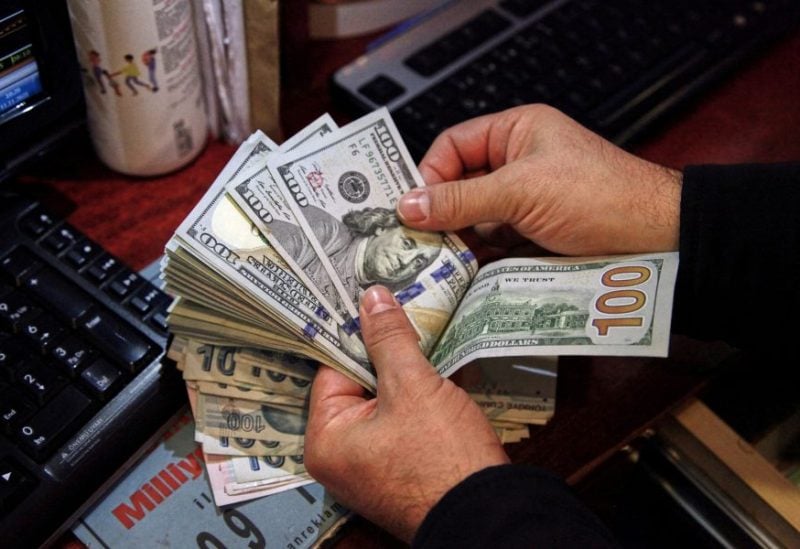
A money changer counts U.S. dollar banknotes at a currency exchange office in Ankara, Turkey November 11, 2021. REUTERS/Cagla Gurdogan/File Photo
The US dollar experienced a five-month decline against both the euro and a range of currencies, primarily due to speculations that the Federal Reserve could contemplate reducing interest rates.
The dollar index, measuring the U.S. currency against six others, fell 0.48 per cent to 100.98, the lowest since July 27. Despite the holiday season resulting in reduced trading activity and heightened volatility due to low liquidity, the dollar is set for a 2.45 per cent drop in 2023, marking a shift from two years of robust gains driven by anticipated and actual interest rate hikes by the Fed to combat inflation.
The Federal Reserve is currently perceived as adopting a dovish stance relative to other major central banks, contributing to market expectations of potential rate cuts. The shift in sentiment occurred after Fed Chairman Jerome Powell unexpectedly expressed a dovish outlook at the central bank’s December meeting.
Policymakers projected a 75-basis-point easing in 2024. In contrast, central banks like the European Central Bank (ECB) have maintained a “higher for longer” stance, while the Bank of Japan has signalled a potential end to its negative rate policy.
The euro saw a 0.54 per cent increase to $1.1102, reaching its highest level since July 27. For the year, the single currency is poised to gain 3.61 per cent. Similarly, the British pound rose by 0.56 per cent to $1.2793, hitting $1.2802 earlier in the session, the highest since August 10. Sterling is on track for a 5.79 per cent return in 2023.
The Japanese yen experienced a 0.35 per cent decline to 141.89 against the dollar, but the dollar is set for an 8.22 per cent gain for the year. The Bank of Japan’s recent announcement included a reduction in the amount of bonds purchased in the January-March quarter, and policymakers emphasized the need to maintain the current policy while hinting at future discussions on an exit from massive stimulus.
Meanwhile, the Australian and New Zealand dollars reached more than five-month highs during the session, with the Australian dollar rising 0.21 per cent to $0.6841, and the kiwi gaining 0.10 per cent at $0.6335.